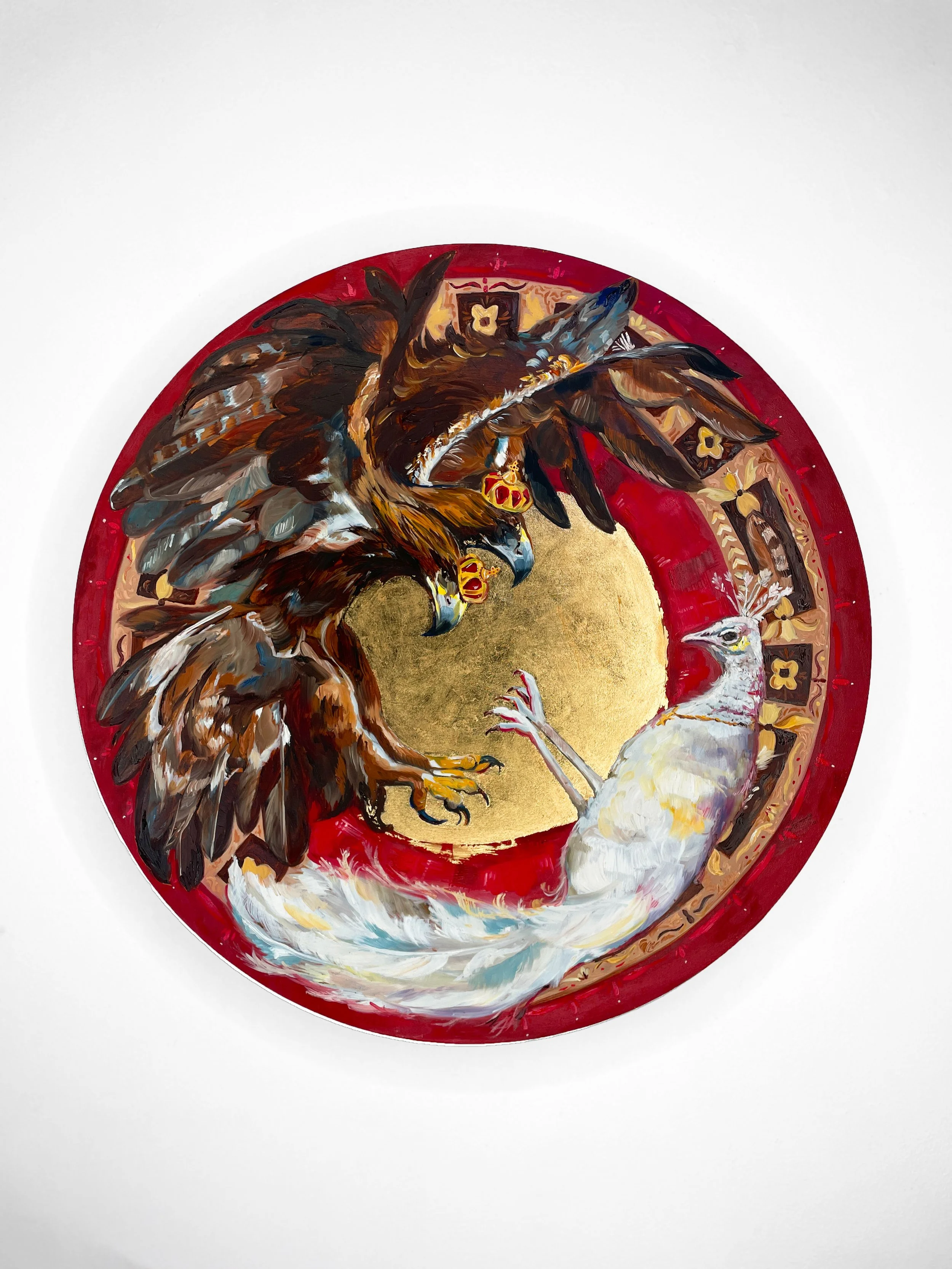About the Work
Vivacious. Opulent. Tense. This circular painting reimagines a Russian Orthodox ecclesiastical carpet—not as a site of sanctity, but as a charged battleground of power, fear, and inner rupture. A crowned double-headed eagle, symbol of church and state, lunges toward a defenseless white peacock, historically an emblem of spiritual purity. Between them sits an intentional void: a center of unadorned gold leaf, where silence becomes confrontation.
This tondo is a deeply personal act of reclamation. The artist, shaped by early religious indoctrination, channels the anxiety, bitterness, and spiritual displacement that followed their exit from the church. “Indoctrination is not revelation,” they write. “It’s coercion.” Using the visual language of iconography—birch wood, oil paint, and gold leaf—they subvert the very materials once used to glorify the institutions that tried to contain them.
While the composition is lush and ornate, the emotional tone is one of tension and anticipation, a moment frozen just before impact. The visual language speaks loudly—red, gold, white, and brown conjure blood, divinity, martyrdom, and ritual. These colors aren't decorative; they're declarative.
In this work, religious imagery is neither praised nor rejected, but transformed. Through painting, the artist crafts their own altar—one that holds both critique and catharsis. The tondo format reinforces this sense of ritual space while distorting its traditional meanings.
This piece is a continuation of the artist’s ongoing exploration of queer identity, spiritual memory, and psychological self-portraiture, where subversive figuration pushes back against the boundaries imposed by belief systems. Ultimately, it asks: What happens when you stop trying to be saved—and start saving yourself?






